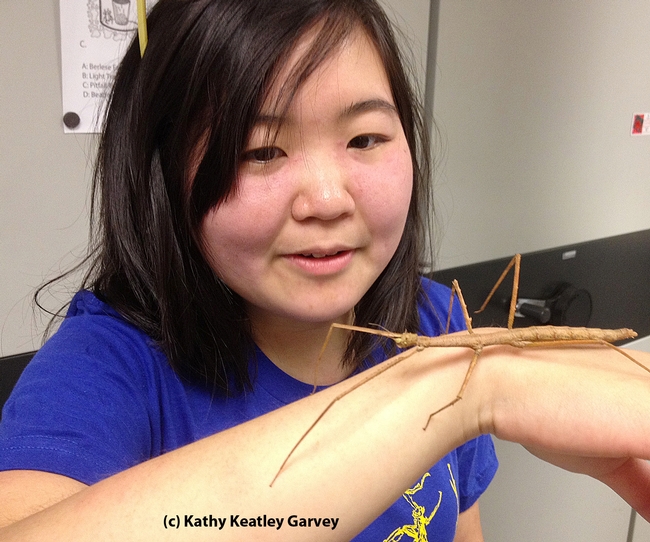- Author: Kathy Keatley Garvey
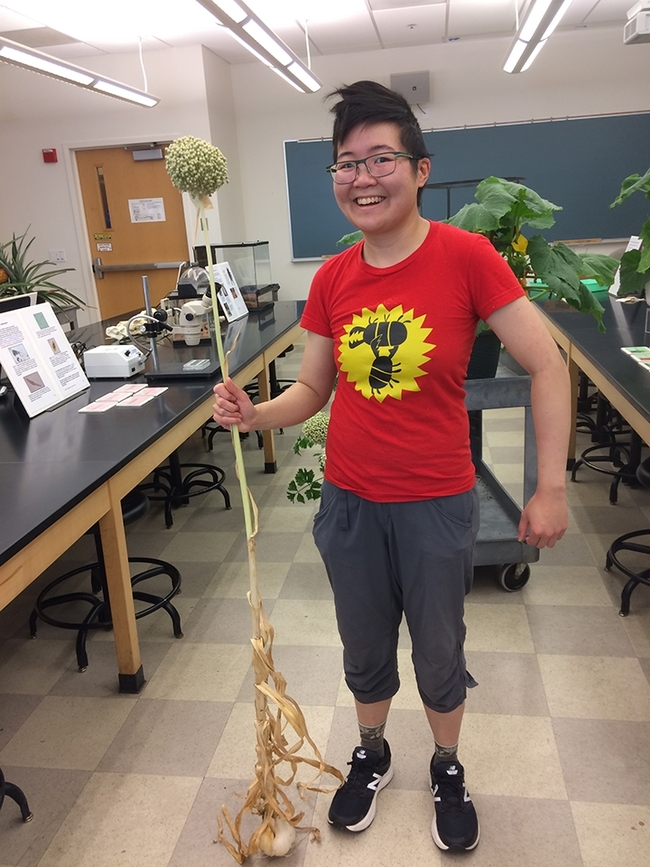
So when UC Davis biology laboratory manager (and talented artist) Ivana Li was asked in 2020 for a graphic to help publicize the UC Davis Biodiversity Museum Day, what better art than a double-decker bus featuring the participating museums and collections?
The graphic graced the volunteers' t-shirts that year. Then in 2021, the COVID-19 pandemic detoured the free, science-based, in-person event (usually held the Saturday of Presidents' Day weekend) and it rolled into a month of virtual presentations.
This year's event, the 11th annual, is set for 11 a.m. to 3 p.m. Sunday, March 6, in the UC Davis Conference Center, 550 Alumni Lane. For the first time, all the displays--from barn owls to stick insects to pine cones to Cretaceous fossils--will be in one place.
And Ivana Li has revised the bus art.
All aboard! C'mon in, Ms. Salt Marsh Harvest Mouse. Don't sit too close to Mr. Golden Eagle. Buzz in Ms. Honey Bee. Stay away from Mr. Chinese Praying Mantis, Tenodera sinensis. Sorry, but the driver can neither guarantee your safety nor your arrival at your intended destination.
Okay, roll call!
The passengers:
- California Raptor Center: Golden eagle
- UC Davis Arboretum and Public Garden: Valley oak leaf
- Anthropology Museum: Projectile point
- Botanical Conservatory: Titan arum
- Phaff Yeast Collection: Budding yeast
- Paleontology Collection: Skull
- UC Davis Bee Haven: Honey Bee
- Bohart Museum of Entomology: Chinese praying mantis, Tenodera sinensis
- Museum of Wildlife and Fish Biology: Salt marsh harvest mouse
- Nematode Collection: Hookworm
- Center for Plant Diversity: Seed cone of a gray pine
- Marine Invertebrates Collection: California sea cucumber (included on bus but this collection will not be included at the Biodiversity Museum Day)
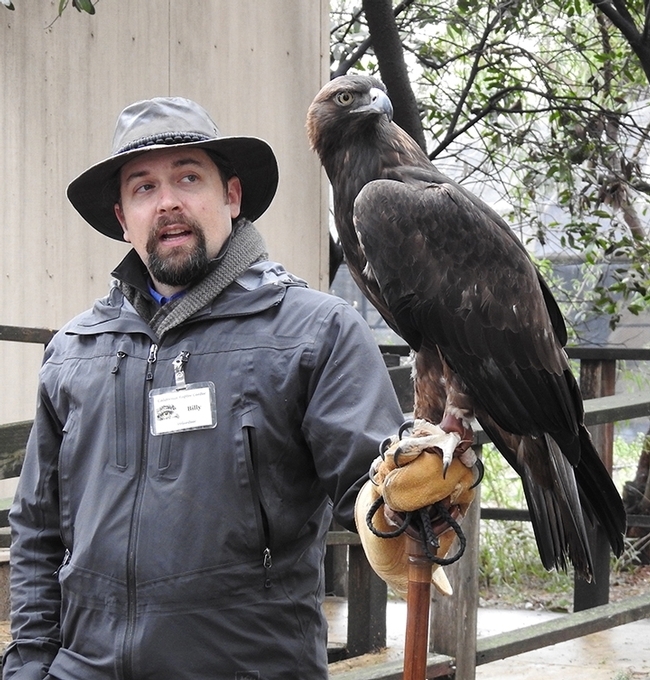
The UC Davis Biodiversity Museum Day promises to be educational, informative and entertaining. Scientists will be there to greet and talk to the visitors. Admission is free, as is the parking. Side trips or tours of some of the facilities or collections, including the Bohart Museum of Entomology, Botanical Conservatory, Arboretum and Public Garden, and the yeast collection are planned but not yet scheduled.
This event is open to the public, but to gain admission, all visitors are required to adhere to UC Davis COVID-19 policies and practices. Currently, this means wearing appropriate masks, being fully vaccinated or showing a recent negative test, and being approved to enter the campus via the Daily Symptom Survey. Attendees are expected to be primarily those associated with the UC Davis and Davis communities. (The general public will have an opportunity to see these displays and more at the 108th annual UC Davis Picnic Day, a campuswide open house on April 23.)
Want to support the annual UC Davis Biodiversity Museum Day? Please consider donating to the UC Davis Biodiversity Museum 2022 Crowdfund by accessing https://bit.ly/3HPhSaA. You can be anonymous in name or contribution, or you can add your name to the donor wall in honor of someone, or in memory of a loved one. The Crowdfund ends at 12:59 p.m. on Feb. 28.
Contributions from $5 on up are welcome, said project managers Tabatha Yang, education and public outreach coordinator for the Bohart Museum of Entomology, and Rachel Davis, a GATEways horticulturist and museum scientist at the UC Davis Arboretum and Public Garden.
"Donations will not only help us sustain the free, in-person event, it will enable our student interns to take science outreach to a whole new level," they said. "The goal of our event is to connect people from all walks of life to science and the biodiversity surrounding them. All donors will be recognized on the Biodiversity Museum Day social media accounts with a shout-out post."
Any amount is appreciated: $5 will get you into the Fantastic Yeasts category; $10, the Sprout (Valley Oaks) category; $25, the Bumble Bee category; and $50, the Jeweled Spider Fly category. Other categories include Atlati, California Condor, and Smilodon. The goal: $5000.
For more information, access the UC Davis Biodiversity Museum Day website and/or connect with Instagram, Twitter, and Facebook.
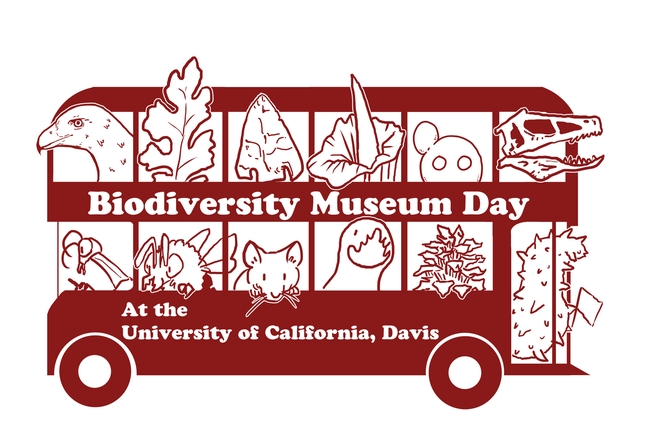
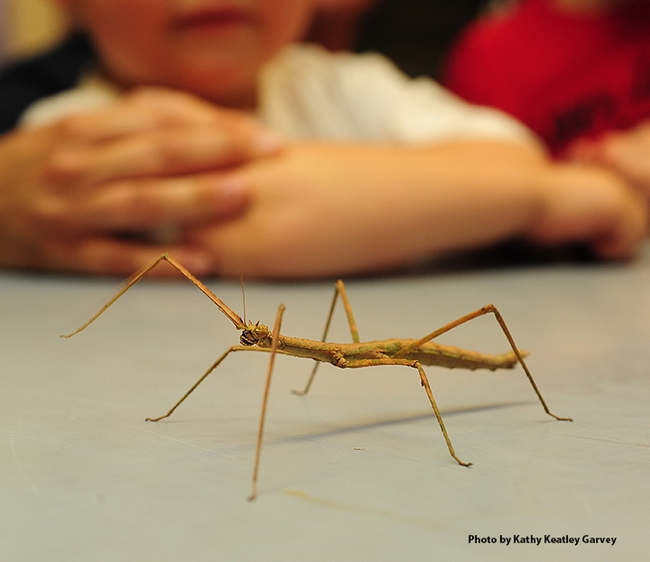
- Author: Kathy Keatley Garvey
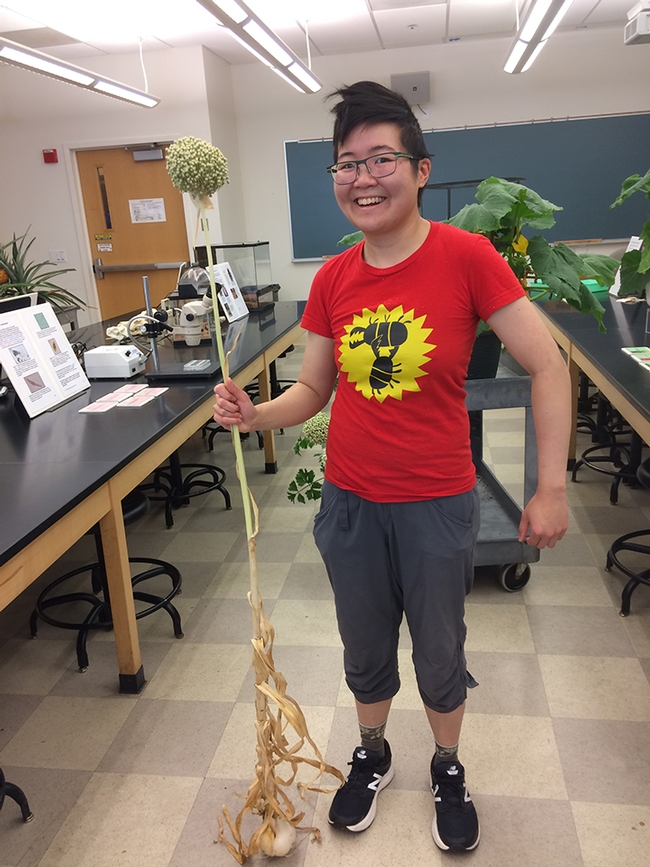
You could call Ivana Li "entomologist, biology lab manager, artist and chef extraordinaire."
Or, you could call Ivana Li "UC Davis service award winner."
She's all those. And more.
Ivana Li is the recipient of a major UC Davis Staff Assembly award for her contributions to the campus community.
Li won the Staff Assembly's Citation for Excellence Individual Award, Service Category. She will receive a cash award of $1500 for the “efforts and positivity” she brings to the community, said spokesperson Darolyn Striley.
The Staff Assembly traditionally hosts an awards ceremony in the fall, but this year, due to the coronavirus pandemic precautions, it is likely to be postponed, Striley said.
A trio nominated Li for the honor: Tabatha Yang, education and outreach coordinator, Bohart Museum of Entomology; supervisor Pat Randolph, academic coordinator, Department of Ecology, Evolution and Behavior, College of Biological Sciences; and Kathy Keatley Garvey, communications specialist, UC Davis Department of Entomology and Nematology.
Also contributing to the nomination were Lynn Kimsey, director of the Bohart Museum of Entomology and professor of entomology; and forensic entomologist/adjunct professor Robert Kimsey, who advises the UC Davis Entomology Club. Li is a past president of the club.
They noted that Li "exhibits a strong sense of community and humanity,” and her “high productivity, engagement, inclusion, generosity and kind personality make for a combination that makes us all proud.”
The award is confidential, with names, gender and identification removed from the nomination form.
"Our nominee is exemplary as a scientist, artist and chef, going above and beyond the job description,” the nominators began. “As a teaching lab coordinator of the largest biology course at UC Davis, (Li) coordinates up to 1300 students and meets the unexpected challenges in ingenious, ‘can-do' and innovative ways. For example, when the lab desperately needed a large mosquito culture, (Li) contacted area vector control agencies, collected the mosquitoes, and delivered them to the lab."
“Without her tenacity in locating materials, that lab would have been a failure for that quarter,” supervisor Pat Randolph, said.
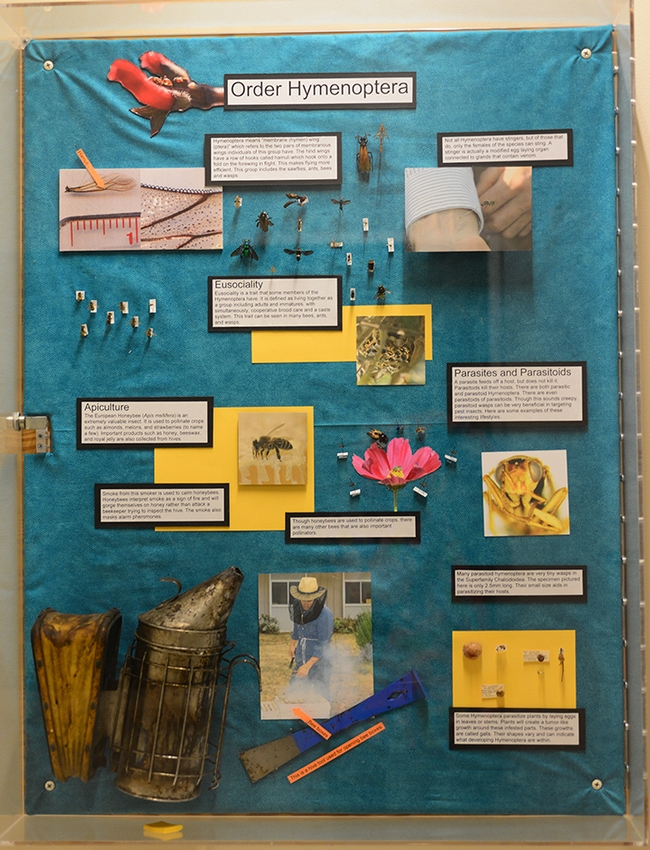
As a scientist and artist, Li is always willing to share her time and talents to fulfill the UC Davis mission of public service, the trio noted. For some 20 years, she has eagerly volunteered at the annual UC Picnic Day, both as an undergraduate student and as an employee. She coordinates department exhibits and displays. She also "interacts enthusiastically" with the public, even engaging in creative face-painting.
Li “organized the Invertebrate Collection and display for the UC Davis Biodiversity Museum Day, an annual science-based day formed nine years ago that draws 4000 people to our campus. This involved wrangling faculty to participate, developing a kid-friendly shell identification game to give them an idea how scientists go about identifying animals.” She “passionately draws people into science and serves as a role model with a welcoming, 'I'm-glad-to-be-here' smile and a genuine 'let's talk-science' friendly approach.”
This year Ivana Li designed the t-shirt that the volunteers wore. It featured a double-decker bus with the “passengers” as organisms showcased in the 13 museums or collection.
On the nomination form, Lynn Kimsey and Tabatha Yang noted that Li creates “amazing dioramas in the hallway of the Lab Sciences Building” and created the “incredible dioramas in the hallway of Briggs Hall.” She developed and created exhibits, t-shirts, and other informational materials for the Bohart Museum.
In addition, Li has served as an instructor at a summer bio boot camp for youngsters and agreed to be the chef for a professor's summer boot camp for graduate and undergraduate students. She also cooks for a scientific society at its annual meeting.
Li holds a bachelor of science degree in entomology from UC Davis, awarded in 2013. In her senior year, she won the "UC Davis Outstanding Senior in Entomology" from the Cal Aggie Alumni Association, and the department's “Outstanding Senior Award.”
Li learned to love insects in her childhood; she grew up in Monterey Park, near east Los Angeles. Professor Sharon Lawler of the UC Davis Department of Entomology and Nematology, who nominated her for the outstanding senior award, noted that “Ivana Li exemplifies the kind of leader, community organizer and entomology that our department seeks to produce. She has especially excelled in her entomology courses and in leadership. Ivana Li is a true entomology and UC Davis success story.”
Yes, she is.
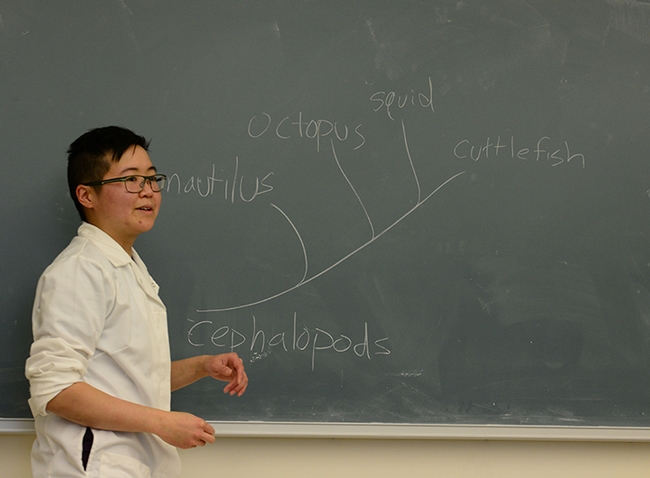
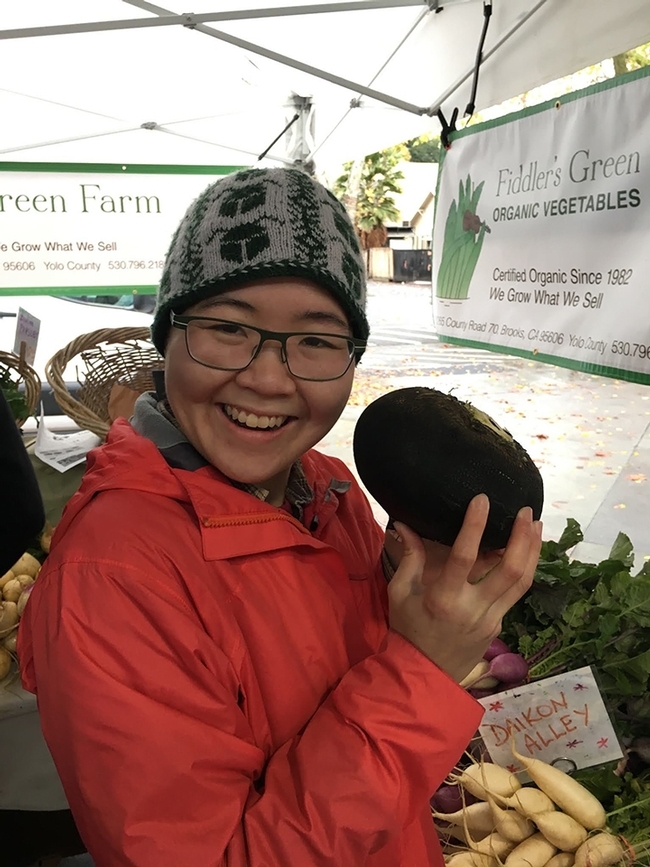
- Author: Kathy Keatley Garvey
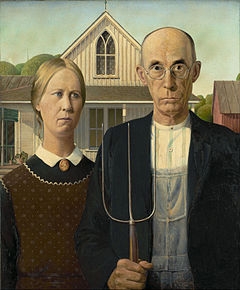
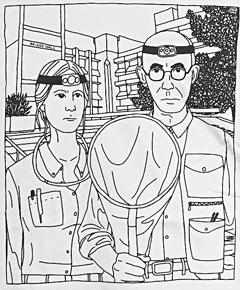
When the 105th annual UC Davis Picnic Day takes place Saturday, April 13, thousands of visitors will explore the campus. It promises to be informative, educational and entertaining.
But over at Briggs Hall, home of the UC Davis Department of Entomology and Nermatology, “special guests” will include bugs.
There will not only be cockroach races, maggot art, and displays of bees, ants, aquatic insects—and more!—but huge images of vectors, the incredible macro photography of medical entomologist/geneticist Geoffrey Attardo, assistant professor, UC Davis Department of Entomology and Nematology.
Virtual Reality Bugs
Attardo will be demonstrating “Virtual Reality Bugs” where youths and adults can watch 40-foot tall, three-dimensional insects and spiders. And in his medical entomology display, he will be exhibiting metal prints of vectors, including a tsetse fly, kissing bug, deer tick, mosquito, stable fly, cat flea and bed bug.
You wouldn't want to encounter a bed bug in your bed, or a flea or tick on your dog, or a mosquito on your arm. You may not even know what they look like up close. But with these images, you can see what's bugging you or your pets.
And with the Virtual Reality Bugs, participants can select what they want to see--or what's towering over them. The list includes a black widow spider, ant, beetle, grasshopper, damsel fly, cicada, cockroach, and a tsetse fly. Each person will be limited to about 30 seconds to accommodate the crowd.
The Briggs Hall activities run from 9 a.m. to about 4:30, while activities at the Bohart Museum of Entomology, will be offered from 11 a.m. to 2 p.m.
TheBohart Museum will focus on the theme, "Will Travel for Bugs: TheBohart Museum of Entomology's Collections from Around the World." It's nominated for a people's choice award, as is the honey tasting exhibit at Briggs Hall. Participants will sample meadowfoam, sage, cotton and buckwheat. QR codes will be at each site. (See news story about the activities at both sites.)
Vectors
But back to the vectors. Did you know that the Bohart Museum provides information or fact sheets on its website at http://bohart.ucdavis.edu/insect-info-sheets.html?
You can learn about some of the vectors that will dwarf you when you visit Briggs Hall.
For example, ticks!
"Ticks are blood-feeding external parasites of mammals, birds, and reptiles throughout the world," writes Lynn Kimsey, director of the Bohart Museum and UC Davis professor of entomology. "They are not insects rather they are arachnids, the same group that includes spiders and scorpions. There are two different groups of ticks, the hard ticks (Ixodidae) and soft ticks (Argasidae). Both are important vectors of pathogens to humans and animals throughout the world. Some diseases of current interest in the United States caused by tick-borne pathogens include Lyme Disease, Rocky Mountain Spotted Fever, and tick-borne Relapsing Fever (soft ticks)
"Many ticks seek hosts by 'questing.' Questing ticks crawl up the stems of grass or perch on the edges of leaves in a typical posture with the front legs extended. Certain chemicals, such as CO2, as well as heat and movement cause questing behavior. Ticks climb onto a potential host that brushes against their extended front legs. Once on a host hard ticks may feed for several days to several weeks.
And fleas!
"Fleas are bloodsucking parasites of humans, livestock and pets," Kimsey writes. "Only adult fleas feed on blood, which they obtain with their piercing/sucking mouthparts. Adult fleas blood feed on birds and mammals.Adult fleas are laterally flattened, wingless insects. They have a small eye spot on the side of the head, and a row of stout spines along the side of the head and the back of the thorax. Adult fleas travel rapidly by jumping, using their legs and a spring-like mechanism in the body. They are capable of spectacular leaps, covering distances up to one hundred times their body length
"The most common flea found on household pets, such as cats and dogs, is the cat flea, Xenopsylla cheopis."
Read the Bohart fact sheets and then check out Attardo's images.
EGSA T-Shirts
If you'd rather wear your bug on your shirt, the Entomology Graduate Student Association (EGSA) can oblige. They have scores of insect-themed t-shirts, ranging from beetles and honey bees to wanna bees. The newest t-shirts in the line-up include two designed by talented doctoral student/ant specialist Jill Oberski of the Phil Ward lab. One is a take-off of American Gothic, the 1930 painting by Grant Wood, except with entomologists holding a net in front of Briggs Hall, UC Davis campus, instead of the farmers holding a pitchfork in front of their farmhouse. The other Oberski t-shirt celebrates the 45th anniversary of UC Davis Picnic Day cockroach races. Roaches rock! Forensic entomologist Robert Kimsey, co-chair of the department's displays at Picnic Day, rears cockroaches in his lab, but on Picnic Day, they're ready to race! Doctoral candidate Brendon Boudinot, EGSA president and co-chair of the department's displays, says the roaches will race on a new racetrack.
Doctoral student/nematologist Corwin Parker of the lab of Steve Nadler, professor and chair of the UC Davis Department of Entomology and Nematology, also came up with a clever idea for a t-shirt. You know how cicadas can be REALLY loud? He drew one plugged into an amp. Now, that's REALLY loud! You can buy EGSA t-shirts at Briggs Hall on Picnic Day or order them online at https://mkt.com/UCDavisEntGrad/ after Picnic Day.
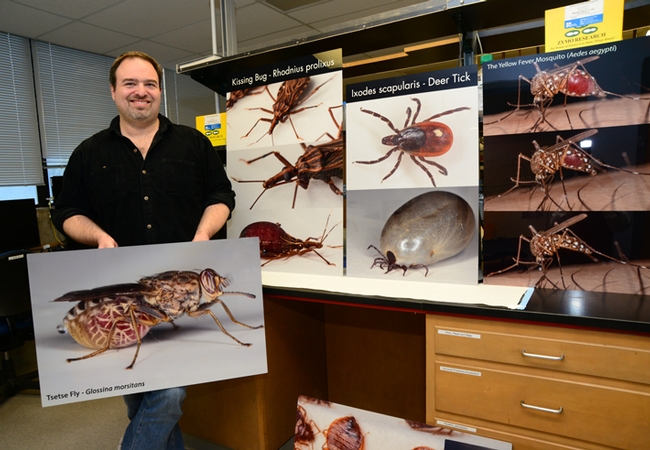
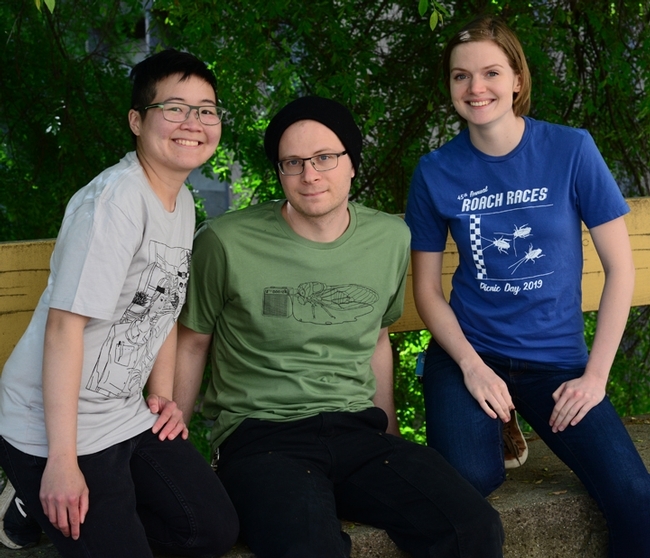
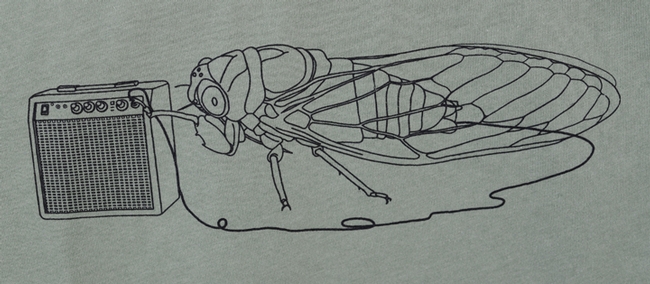
- Author: Kathy Keatley Garvey
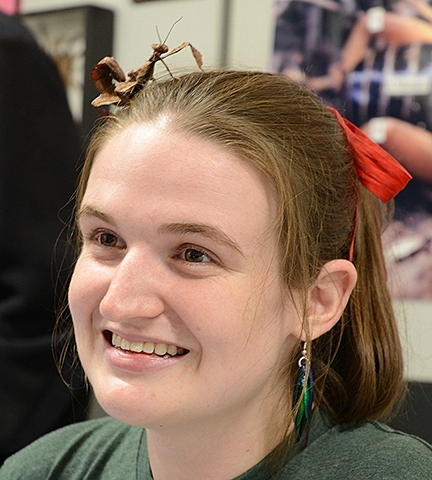
When you attend the UC Davis Bohart Museum of Entomology's open house on Sunday, Jan. 21, featuring insect art, you will find art so intricate and so breathtaking that you may change your career path!
The family friendly event, free and open to the public, takes place from 1 to 4 p.m. in Room 1124 of the Academic Surge Building.
Two of the talented artists showing their work will be Charlotte Herbert, who is seeking her doctorate in entomology from UC Davis, and Ivana Li, a UC Davis biology lab manager who received her bachelor's degree in entomology from UC Davis in 2013.
Herbert studies Asilidae (assassin fly) evolution with major professor Lynn Kimsey, director of the Bohart Museum and professor of entomology. "I hope to someday make my own scientific illustrations for taxonomic revisions," Herbert says. "My dream is to be a curator of an entomology museum." Herbert started drawing and painting in 2015 and "have loved it ever since." She now helps teach Entomology 001, and entomology and art fusion class.
Li, a past president of the UC Davis Entomology Club and a recipient of the UC Davis Department of Entomology's 2012 Outstanding Undergraduate Award, recalls that her fascination with insects began in early childhood but she didn't know the meaning of “entomologist” until her second-grade encounter with Chester. Chester is the main character of George Selden's Newbery-award winning book, A Cricket in Times Square.
"I was pretty thrilled that to find out that there was actually a job in which you get to study insects," Li recalled. "That was the best. It still is.”
The open house, "Bug-Art@The Bohart," will feature a number of artists. UC Davis undergraduate student and artist Karissa Merritt will be on-hand sketching insects for all to see, said Tabatha Yang, education and outreach coordinator. You'll see:
- Art from the collection of the late Mary Foley Bensen, a former Smithsonian Institution scientific illustrator who lived the last years of her life in Davis, and who worked for entomology faculty
- Art from Lynn Kimsey, director of the Bohart Museum and professor of entomology, who illustrated under her maiden name Lynn Siri
- Art by Charlotte Herbert, Ph.D. student; and UC Davis alumni Ivana Li and Nicole Tam, who hold degrees in entomology from UC Davis
- Exhibit of "insect wedding photography" by Bohart associates Greg Kareofelas and Kathy Keatley Garvey
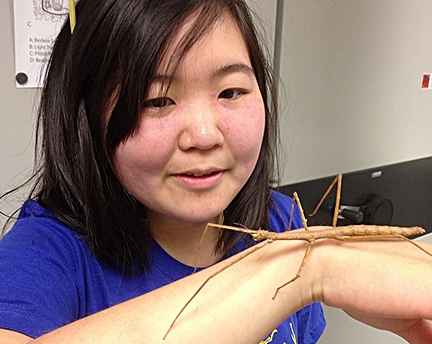
Open house attendees are invited to wear insect-themed attire, including dresses, ties, and jewelry. A contest will take place at 3 p.m. for the best insect-themed outfit, and for the best insect-themed tattoo (tattoo must be in a family friendly location).
Entomologist Jeff Smith, who curates the butterfly and moth collection at the Bohart and is newly returned from a collecting trip to Belize, will be on hand to show the Bohart collection.
In connection with Bohart open house, campus visitors can tour the Design Museum exhibit, It's Bugged: Insects' Role in Design, in 124 Cruess Hall from 2 to 4 p.m. The exhibit, which runs through April 22, includes art from faculty and students affiliated with the UC Davis Department of Design, and specimens from the Bohart Museum, as well as images by UC Davis alumnus and noted insect photographer Alex Wild, curator of entomology at the University of Texas, Austin. Wild received his doctorate in entomology from UC Davis in 2005, studying with major professor Phil Ward.
The Bohart Museum houses a global collection of nearly eight million specimens. It is also the home of the seventh largest insect collection in North America, and the California Insect Survey, a storehouse of the insect biodiversity. Special attractions include a “live” petting zoo, featuring Madagascar hissing cockroaches, walking sticks, praying mantids and tarantulas. Visitors are invited to hold some of the arthropods and photograph them. The museum's gift shop, open year around, includes T-shirts, sweatshirts, books, jewelry, posters, insect-collecting equipment and insect-themed candy.
The Bohart Museum holds special open houses throughout the academic year. Its regular hours are from 9 a.m. to noon and 1 to 5 p.m. Mondays through Thursdays. The museum is closed to the public on Fridays, Saturdays and Sundays and on major holidays. Admission is free. More information on the Bohart Museum is available by contacting (530) 752-0493 or emailing bmuseum@ucdavis.edu or Tabatha Yang at tabyang@ucdavis.edu.
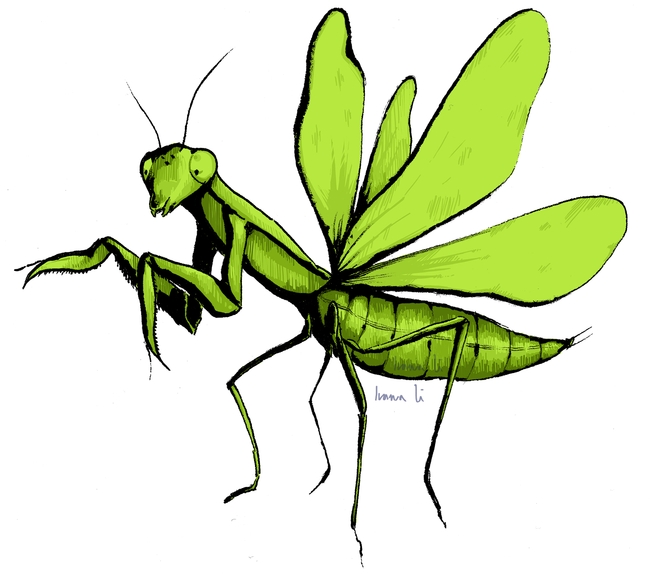
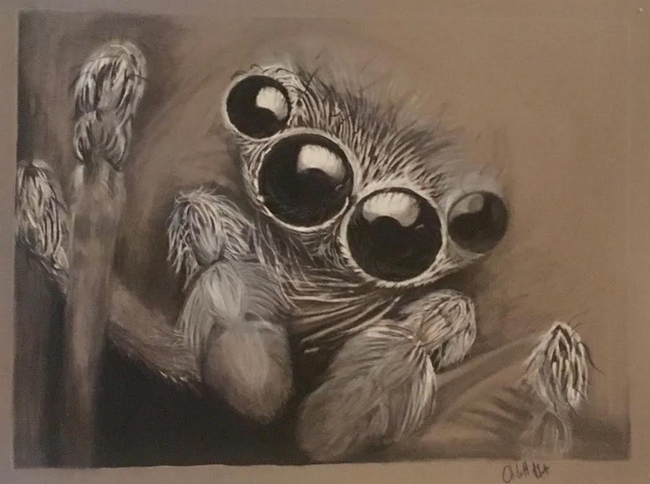
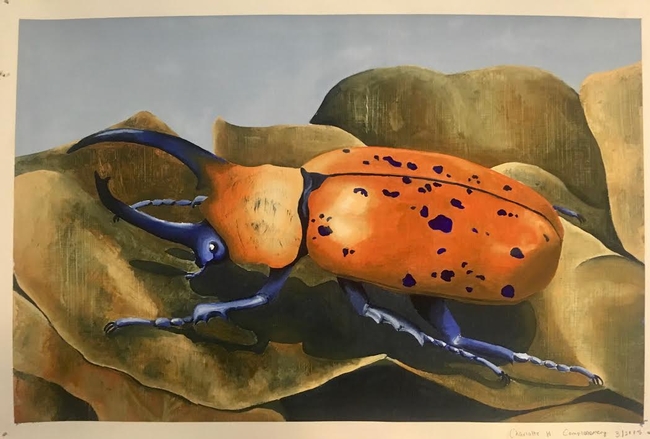
- Author: Kathy Keatley Garvey
If you or someone in a household near you can draw a bug, then you need to head over to the Bohart Museum of Entomology on the UC Davis campus on Saturday afternoon, Dec. 15.
The Bohart Museum is hosting an open house from 1 to 4 p.m. in Room 1124 Academic Surge on Crocker Lane. It's free and open to the public.
The theme: "Insects in Art."
The person (all ages invited) who submits the most creative bug drawing between 1 and 3:30 p.m. will win a t-shirt at around 4 p.m.
Here's what you do: draw a bug that will fit into a button about 2-1/4 wide. The Bohart Museum folks will insert it into their button-maker machine. If your bug art is selected as the most creative, you take the button home--and your prize, an insect-related t-shirt.
The open house will feature the illustrations of Lynn Kimsey, director of the Bohart and professor of entomology at UC Davis; the late Mary Foley Benson of Davis; and Ivana Li, an undergraduate entomology student and president of the UC Davis Entomology Club.
Visitors also will be able to see the original plates for the children’s book, “The Story of the Dogface Butterfly,” written by Fran Keller, doctoral candidate in entomology, and Laine Bauer, who received her degree in art in June from UC Davis. Greg Kareofelas of Davis, a Bohart volunteer, contributed photos.
Expanding on the open house theme, Heydon said that “Insects and Art” began as early as the caveman days. Cave drawings found in Spain depict honey gatherers from more than 10,000 years ago.
“Insects in art are found in scientific illustrations and are represented on fabric, paintings, toys, jewelry and other media,” Heydon said.
The Bohart Museum houses a global collection of nearly eight million insect specimens and is the seventh largest insect collection in North America. It is also the home of the California Insect Survey, a storehouse of the insect biodiversity. Noted entomologist Richard M. Bohart (1913-2007) founded the museum in 1946.
In addition to the insect specimens, the Bohart houses a “live petting zoo” of Madagascar hissing cockroaches, walking sticks and tarantulas; and a gift shop filled with t-shirts, sweatshirts, jewelry, posters, insect nets, and insect-themed candy.
Bohart officials schedule weekend open houses throughout the academic year so that families and others who cannot attend on the weekdays can do so on the weekends. The Bohart’s regular hours are from 9 a.m. to noon and from 1 to 5 p.m., Monday through Thursday. The insect museum is closed to the public on Fridays and on major holidays. Admission is free.
The remaining weekend open houses:
Sunday, Jan. 13, 1 to 4 p.m.
Theme: "Extreme Insects"
Saturday, Feb. 2, 1 to 4 p.m.
Theme: "Biodiversity Museum Day"
Sunday, March 24, 1 to 4 p.m.
Theme: "Aquatic Insects"
Saturday, April 20: 10 a.m. to 3 p.m.
Theme: UC Davis Picnic Day
Saturday, May 11, 1 to 4 p.m.
Theme: "Moth-er's Day"
Sunday, June 9, 1 to 4 p.m.
Theme: "How to Find Insects"
